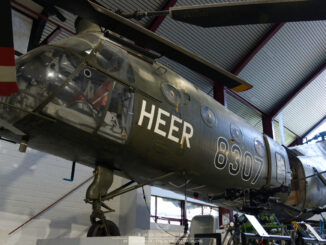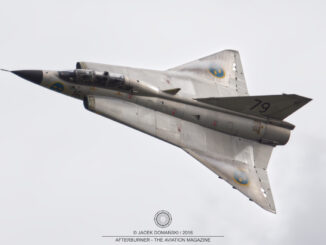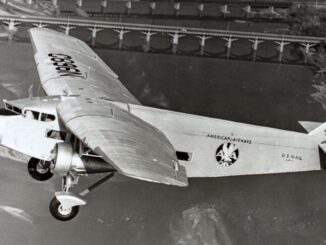
Supermarine Spitfire, a true legend of aviation and one of the most iconic aircraft in history, made its first flight.
The history of this legendary aeroplane has begun in 1931, when the British Air Ministry released specification for a new, modern fighter for the Royal Air Force. The main criterion was the speed, as the aircraft had to be able to reach 400 km/h (250 mph).
Seven aircraft designers came forward to create an aircraft meeting the requirements of the Air Ministry. Among them was an English aeronautical engineer, Reginald Joseph Mitchell from Supermarine Aviation Works Ltd. (commonly just called Supermarine). Both the aviation manufacturing company and its engineer were already famed for the aircraft created at Supermarine factory, including, for example, the series of racing seaplanes – with the speed record breaking and Schneider Trophy air race winning Supermarine S.6.
J. Mitchell’s project of a new Royal Air Force fighter was designated as Supermarine Type 224. This aircraft was, likewise the above mentioned Supermarine S.6, a monoplane with an open cockpit. However, the new aircraft had a gull-wings and, instead of floats used with S.6, a fixed gear covered with fairings. The prototype of Type 224 was powered by a 600 hp Rolls-Royce Goshawk engine and took its first flight in February 1934. Unfortunately for Mitchell and five other aircraft manufacturers, Gloster Gladiator biplane was declared the aircraft most-suited the government specification and entered into service.
Given the turn of events, Mitchell and his team at Supermarine were quite disappointed, but they didn’t give up, immediately starting the works on another aircraft. This time, they decided to use their experience from creating the already proven racing seaplanes. The new project by Supermarine was designated as Type 300. Unlike its predecessor, this aeroplane had a retractable gear and a shorter wingspan.
In July 1934, the project was submitted to the Air Ministry, but Type 300 was also rejected by this authority. Once again, Mitchell re-designed his aeroplane: it now received a closed cockpit with a canopy, oxygen supply system for the pilot and slightly different wings. In addition, the power unit was also replaced by a new, 1000 hp Rolls-Royce PV-XII V-12 engine (the first of the series later known as Merlin engines). In November 1934, supported by Vickers-Armstrong, the owner of Supermarine company, J. R. Mitchell and his team started a detailed design work on the aircraft.
On 1st December 1934, the Air Ministry finally issued a contract for the improved Supermarine Type 300 design, providing £10,000 for continued works. A month later, on 3rd January 1935 the specification of the contract was adjusted to the Mitchell’s aircraft. As successively amended, the armament of new aeroplane was enhanced to four .3030 Browning machine guns.
On 5th March 1936, at Eastleigh Aerodrome, Captain Joseph „Mutt” Summers – chief test pilot of Vickers company, performed the first, eight-minute flight of the new Supermarine fighter prototype (serial number K5054). In further months, the aeroplane made a few more test flights resulted in some more changes in the design, including propeller and engine.
The last test flight was performed by Flight Lieutenant Humphrey Edwardes-Jones from the Royal Air Force, who passed his report from the flight to the Air Ministry, just after the landing. Edwardes-Jones´ rating of the new fighter was positive with only one, minor note – lack of a gear position indicator.
As a consequence, just three weeks after the decisive test flight, on 3rd June 1936, the Air Ministry ordered 310 aircraft of the new type. Later that month, on 27th June, the Spitfire – as the aircraft was officially named – was for the first time presented to the general public.
During the initial stage of the World War II, especially the Battle of Britain, Supermarine Spitfire became – along with Hawker Hurricane – the workhorse of the Royal Air Force, finally overshadowing the latter and becoming one of the World War II iconic aircraft. Opposed to Hurricane, that was shortly re-assigned a fighter-bomber and then a ground-support aircraft, the modernizing potential of Spitfire allowed the Mitchell´s fighter to stay in the first line of combat until the end of the war.
There were 20,351 Spitfires manufactured until 1948, built in 24 variants, including fighter, sea-fighter, photo-reconnaissance aeroplane and even two-seat trainer. Due to its unique and timeless silhouette, Supermarine Spitfire is still adored by many aviation professionals and enthusiasts around the world and considered as one of the most beautiful airframes in the history of aviation.



